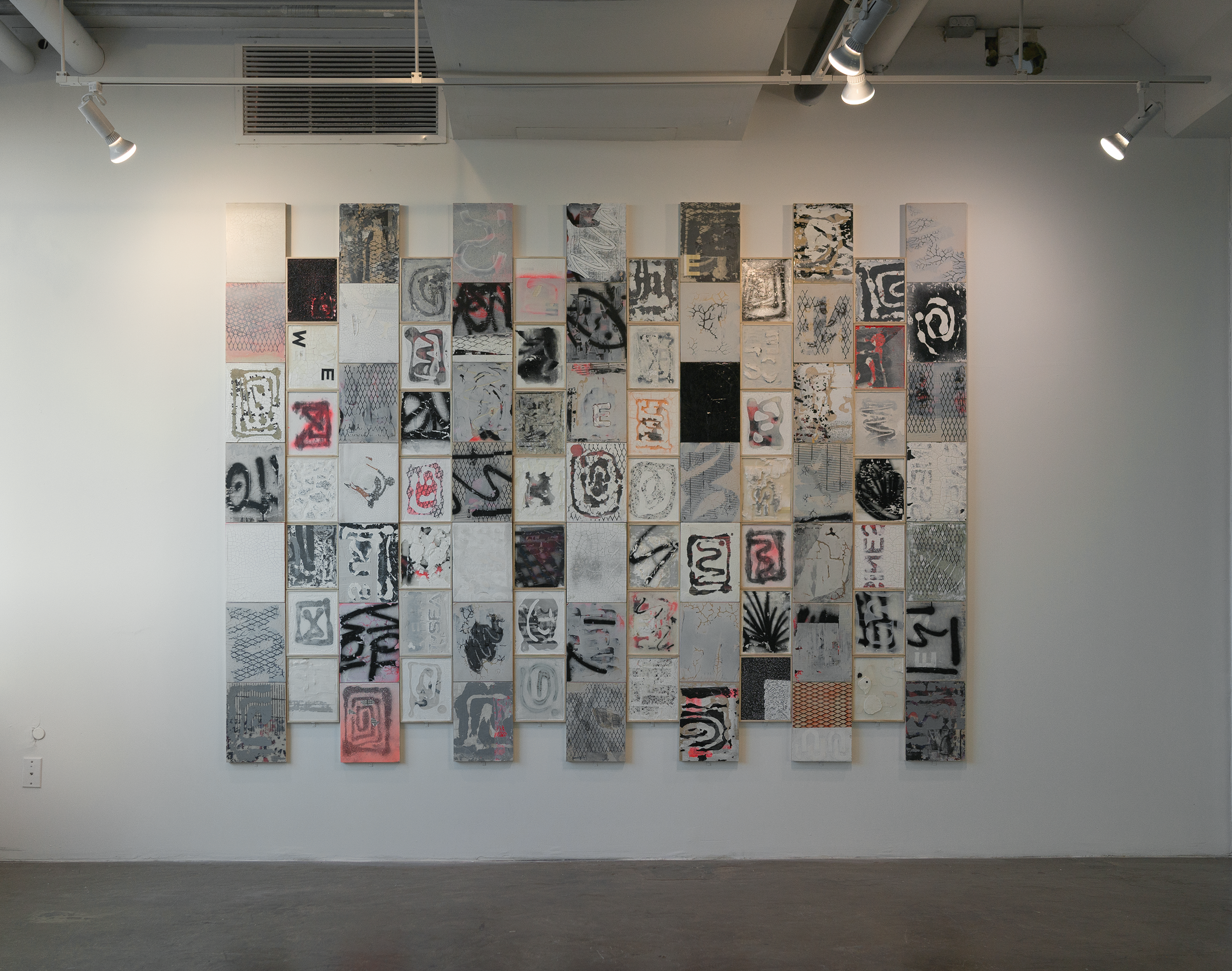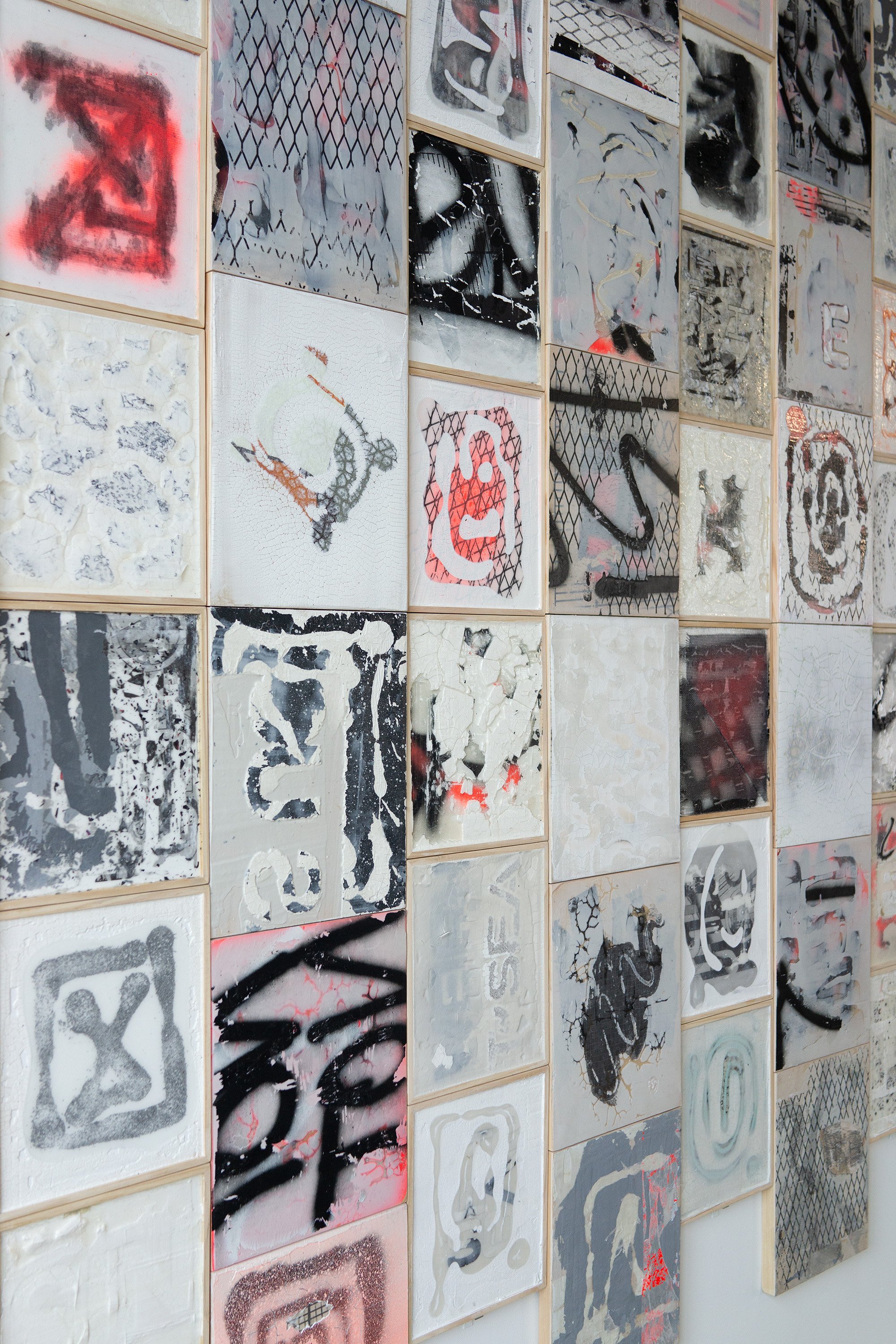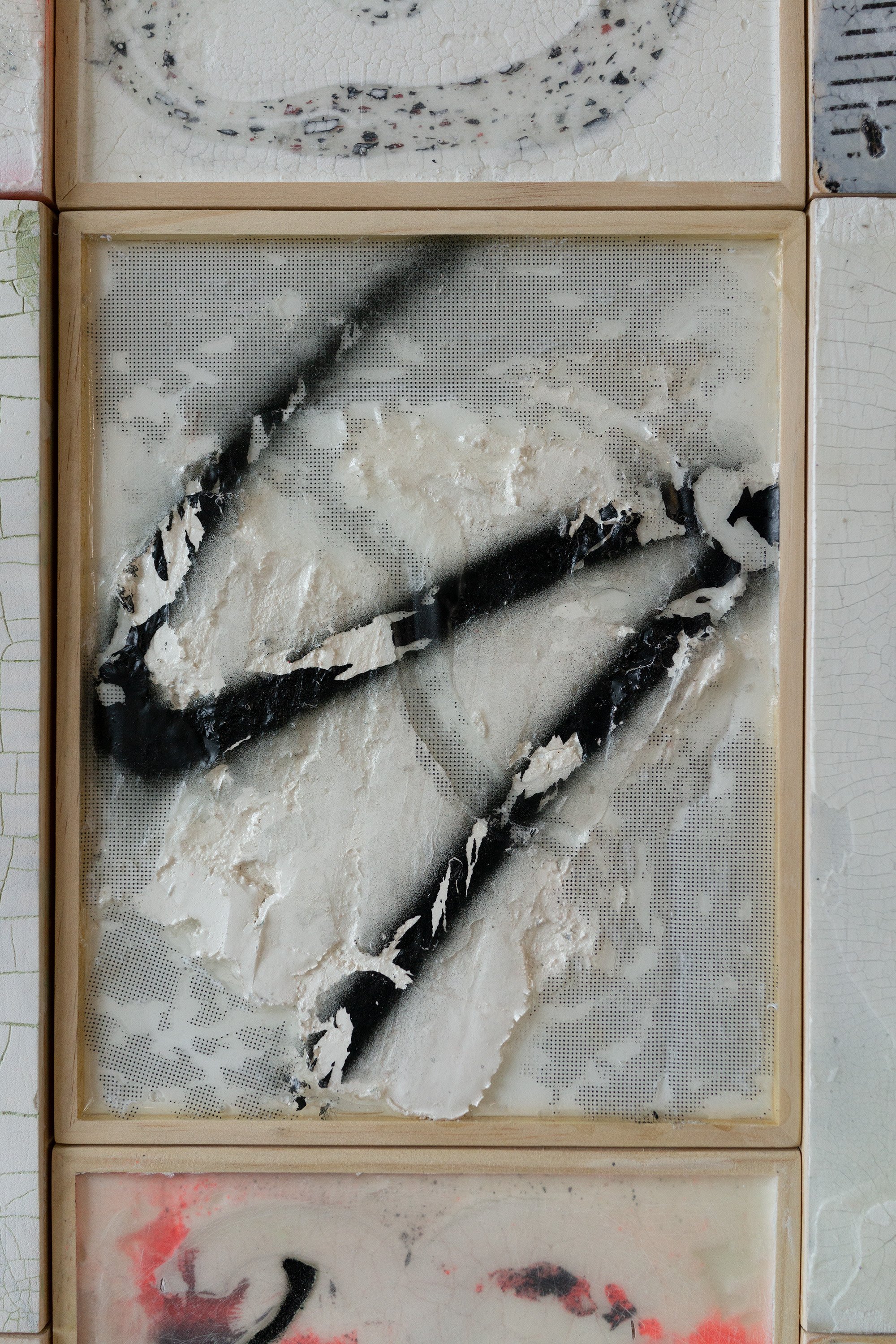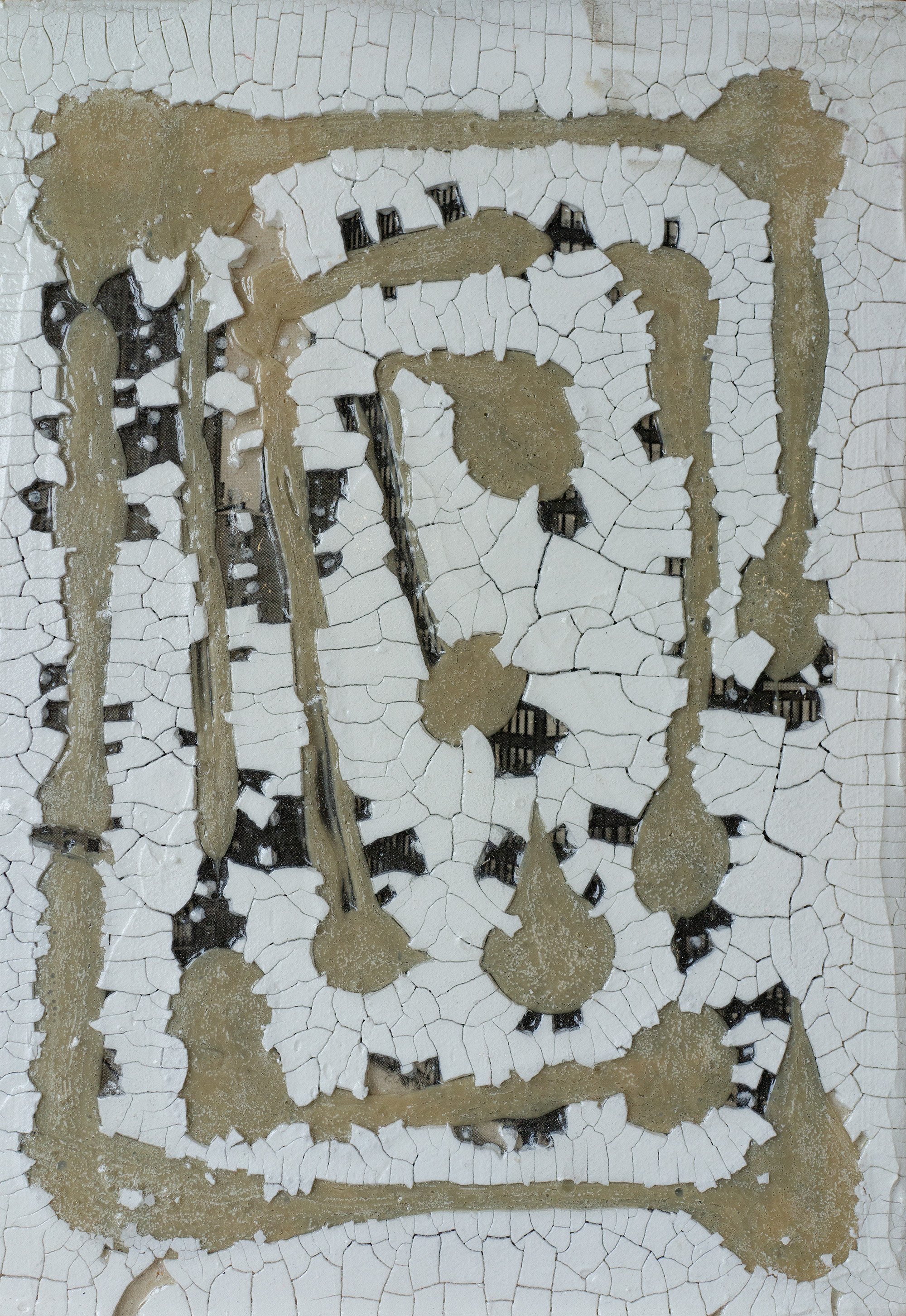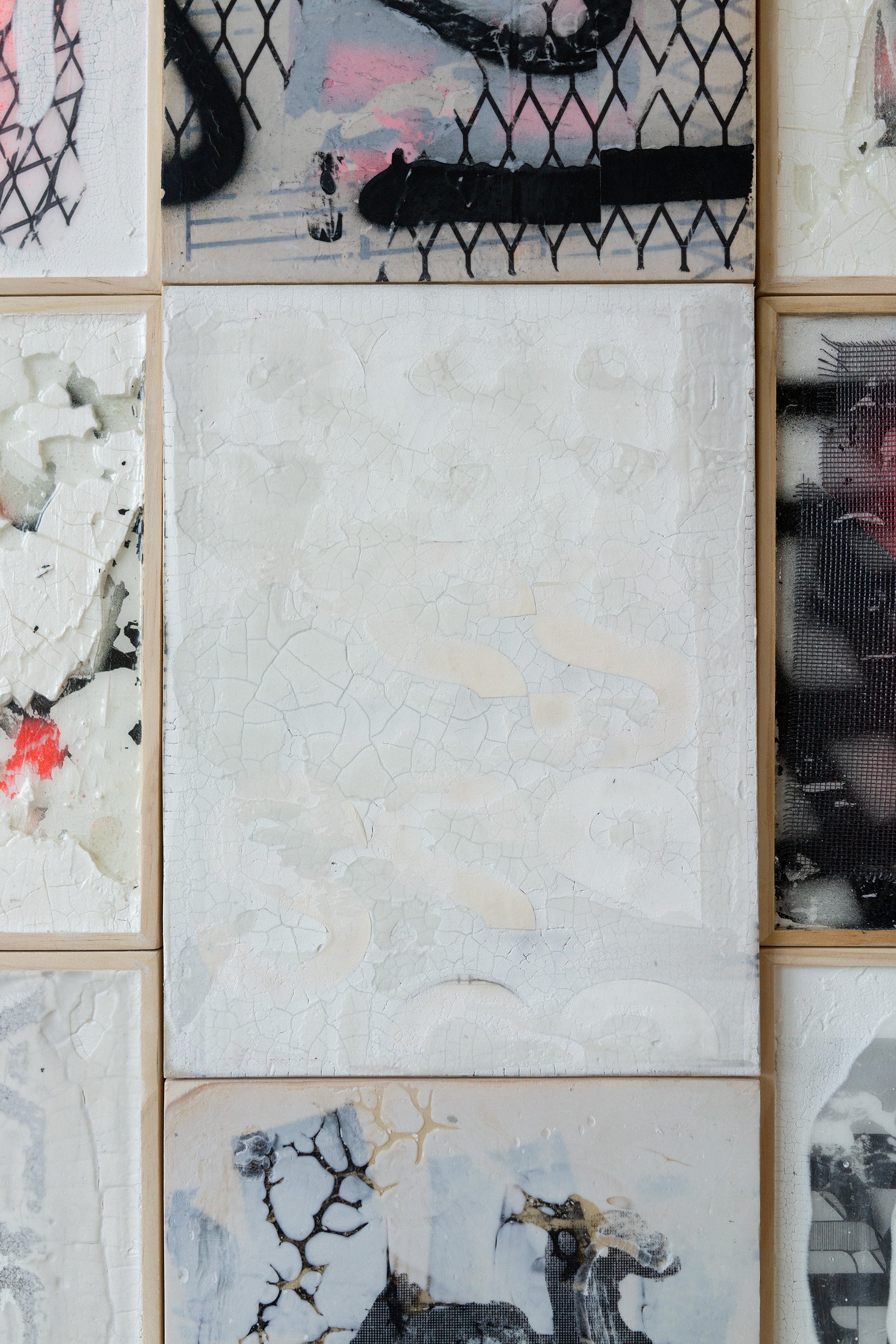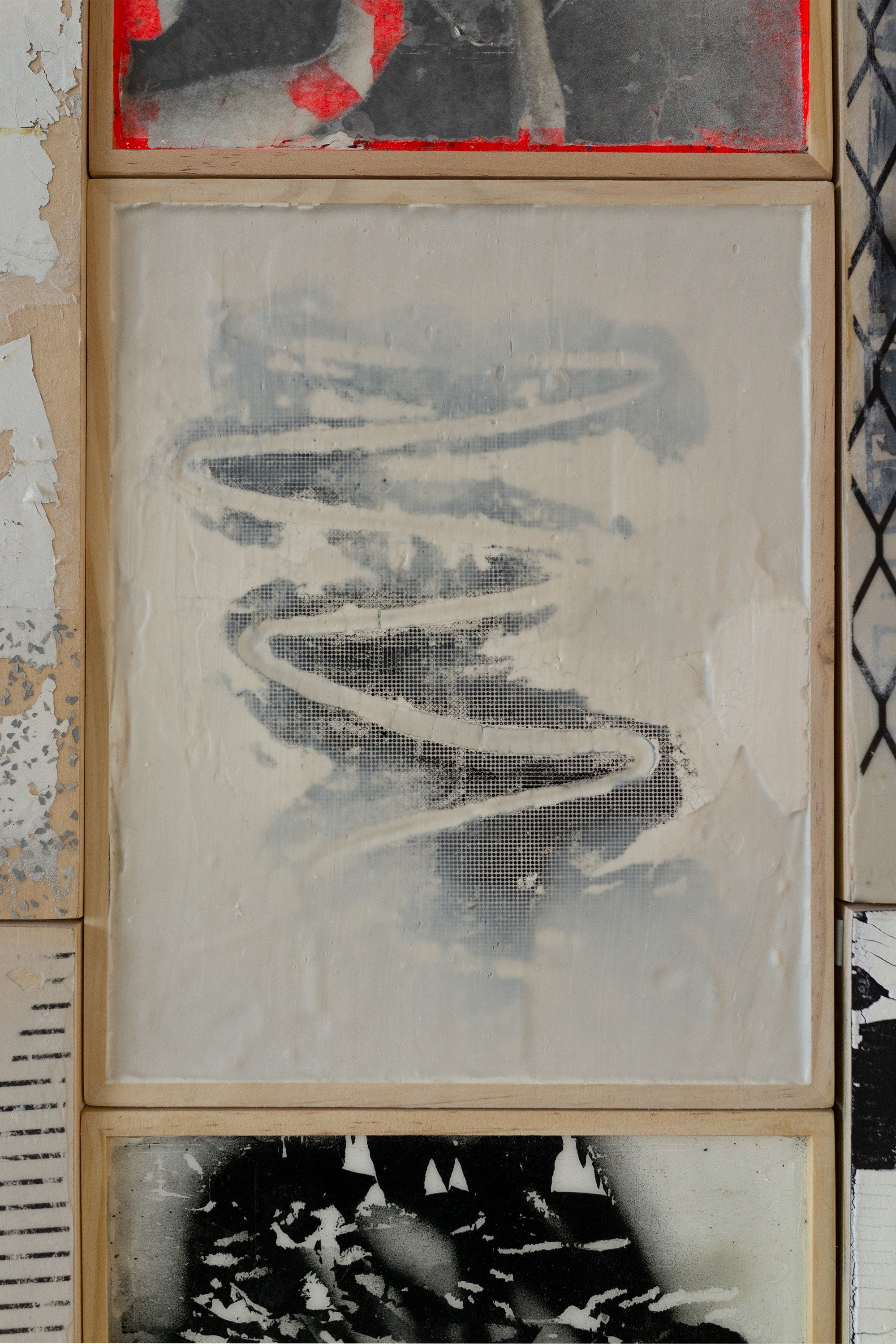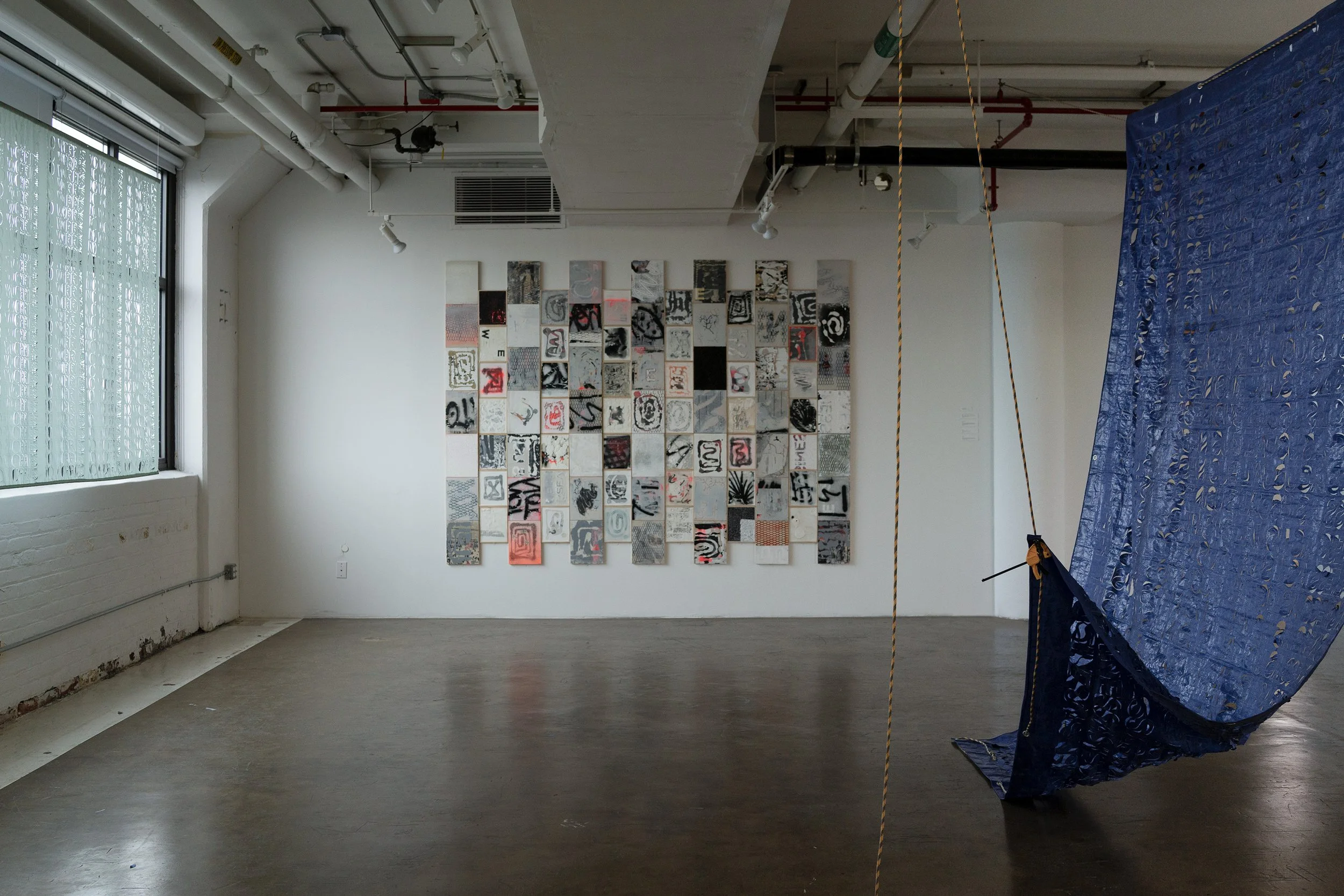NEW KNEW
NEW KNEW
What place does art have in a future with great social and environmental uncertainty? New Knew, looks at actions and mentalities of the past from the perspective of both an artist working in the tradition of painting and an individual. The work in this exhibition begins from a definition of painting as surface, mark, and consequence. Language and its attendant graphic forms are my primary influence. In particular, I’m interested in the varied meanings that emerge from the interaction of letters and words with the material they appear on.
In TARP, the phrase “BUSINESS AS USUAL” is burned by hand repeatedly into the surface of a common blue covering suspended from the ceiling, rendering it functionally useless. My choice of material and the laborious process of production enter into an ever-unfolding relationship with the multiple and often conflicting ways of interpreting the phrase. Social Fabric represents another approach to compromising the function of material with written language. Nylon ripstop fabric, created as a cheap replacement for silk parachutes during World War Two, is mechanically punctured over and over with the phrase “NO WORRIES”, in Bell Centennial typeface. The material and production processes imply a reverence for technological progress and efficiency, and, while the piece itself blocks a window, the phrase offers glimpses of the world outside. SINK, an aquatint, offers a third one-liner, this time in the manner of Derrida’s “différance”. “Weight and Sea”, a deliberate misspelling of a phrase that itself means to defer, is repeated six times in block letters that dissolve into a dark prism. The two readings of the phrase relate to the image and aquatint process in a reciprocal relationship.
My interest in language and material comes from growing up in a rural area close to the Rustbelt city where I spent much of my teens and early twenties. Despite many shared qualities and geographic proximity, these two places functioned according to completely different realities. Differences were easily erased in the small town but were never able to be covered in the city. An installation composed of ninety-one wood panels, Conversation Piece (1/26/2022–3/26/2022), is inspired by the constant effacement of the modern built environment. Each panel was a chance to give a voice to the ancillary and often-overlooked materials of the artist’s studio: cheap wooden study panels, acrylic gel mediums, photocopies, stencils, spray paint, and more. The resulting grid is an immersive world of gestural marks, cracked and layered textures, and colors that mimic the drab subtlety of the urban environment punctuated by pops of fluorescence.
These four pieces are connected by a commitment to human-driven, labor-intensive methods of production. By foregrounding this as an artistic device, I hope to bring to mind the hidden human presence behind the production of anything. Even when making Social Fabric, hours of manual pre-production work and testing were required before the piece was executed with state-of-the-art technology. This demonstrates that even in the face of great uncertainty, the place of art in the future is the place of humans.
TARP
2021
Blue PVA Tarpaulin hand cauterized with soldering iron, nylon diamond braid rope, clamps.
120 x 96 x 36 in. (approx)

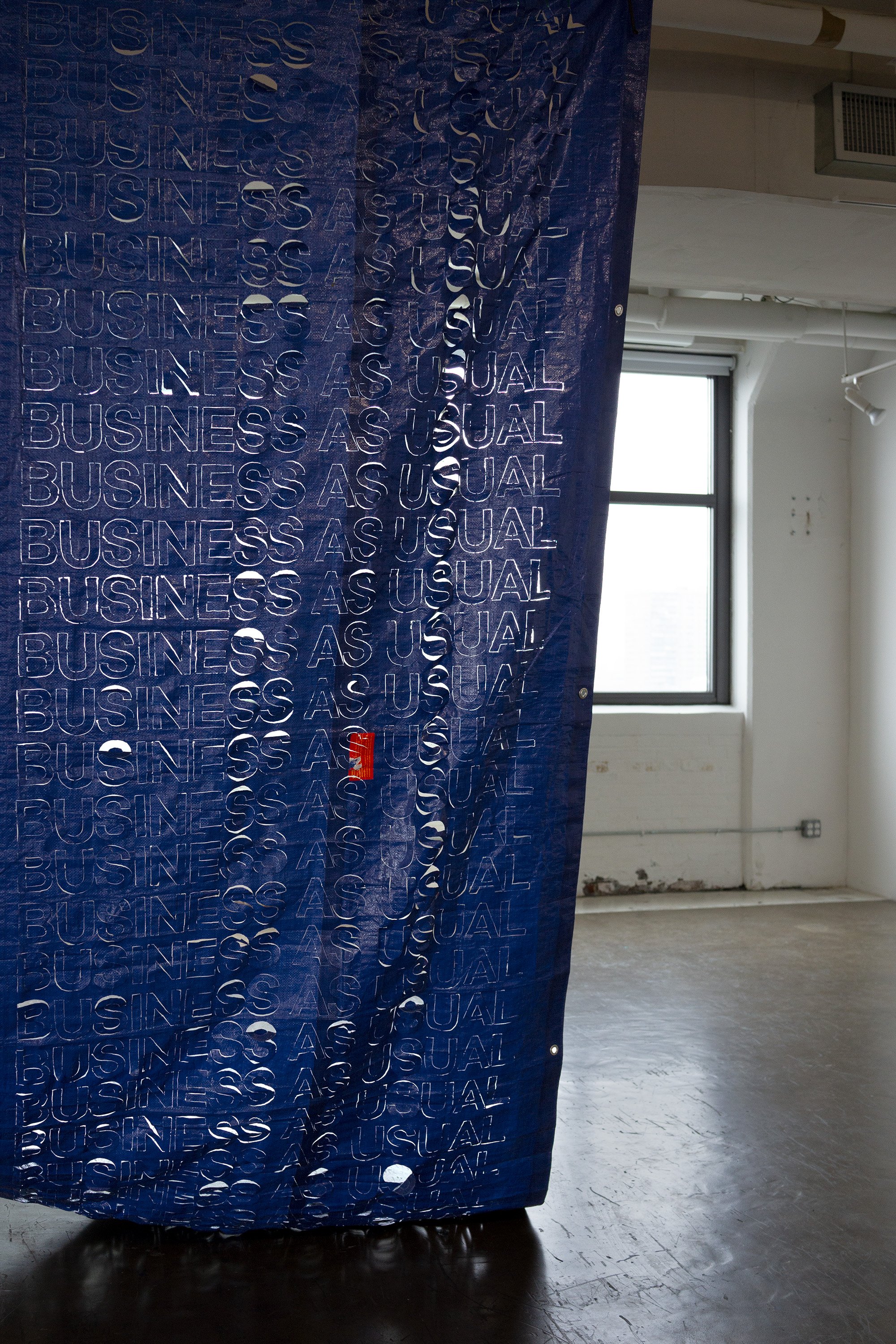
Social Fabric
2022
4 oz Super K-cote Ripstop Nylon perforated with Zünd G3 Digital Cutter, phrase set in Bell Centennial typeface, steel rods, monofilament, hardware
60 x 139 in.
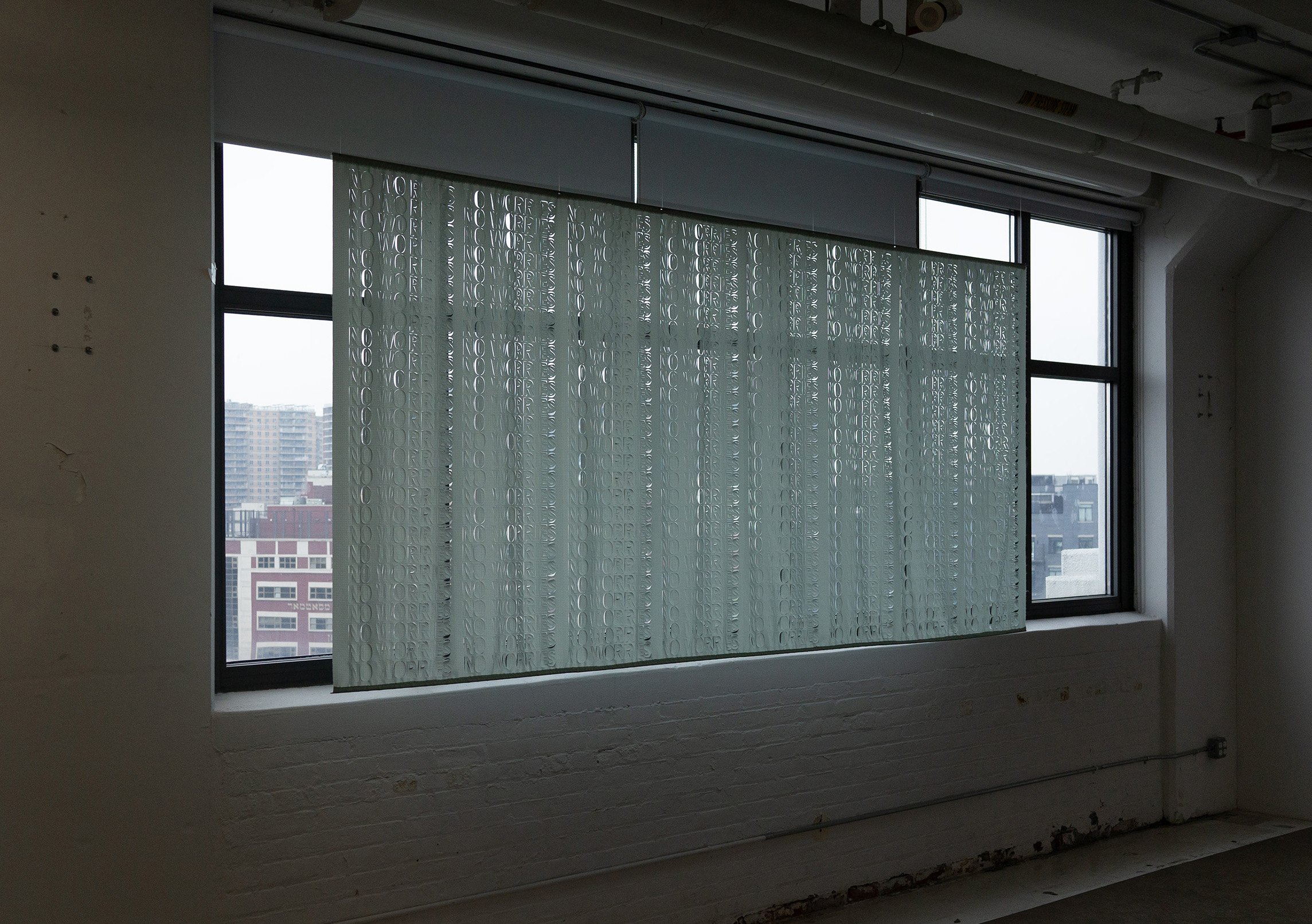
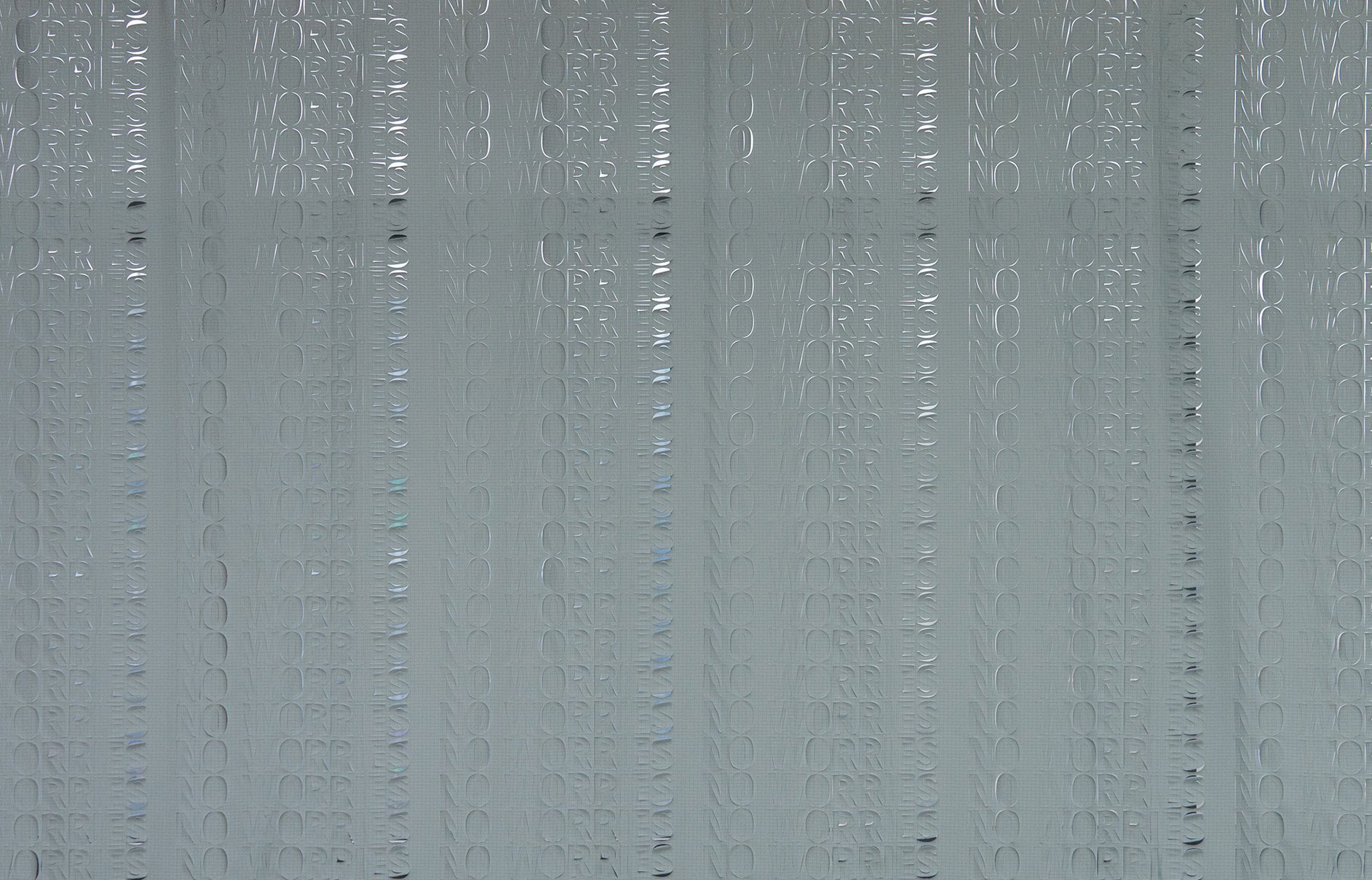
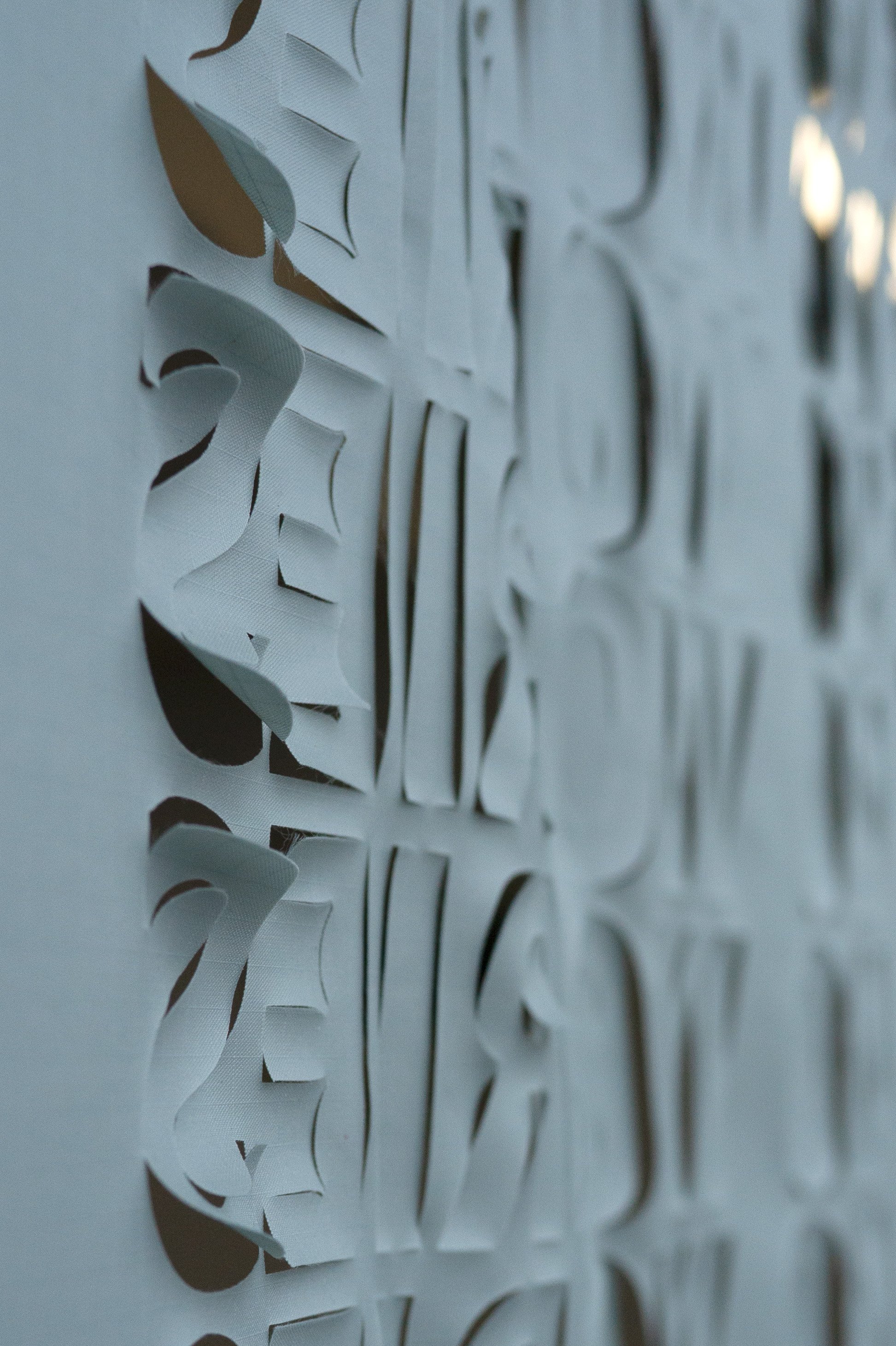
Sink
2021
Aquatint with walnut frame.
34 x 39 in.
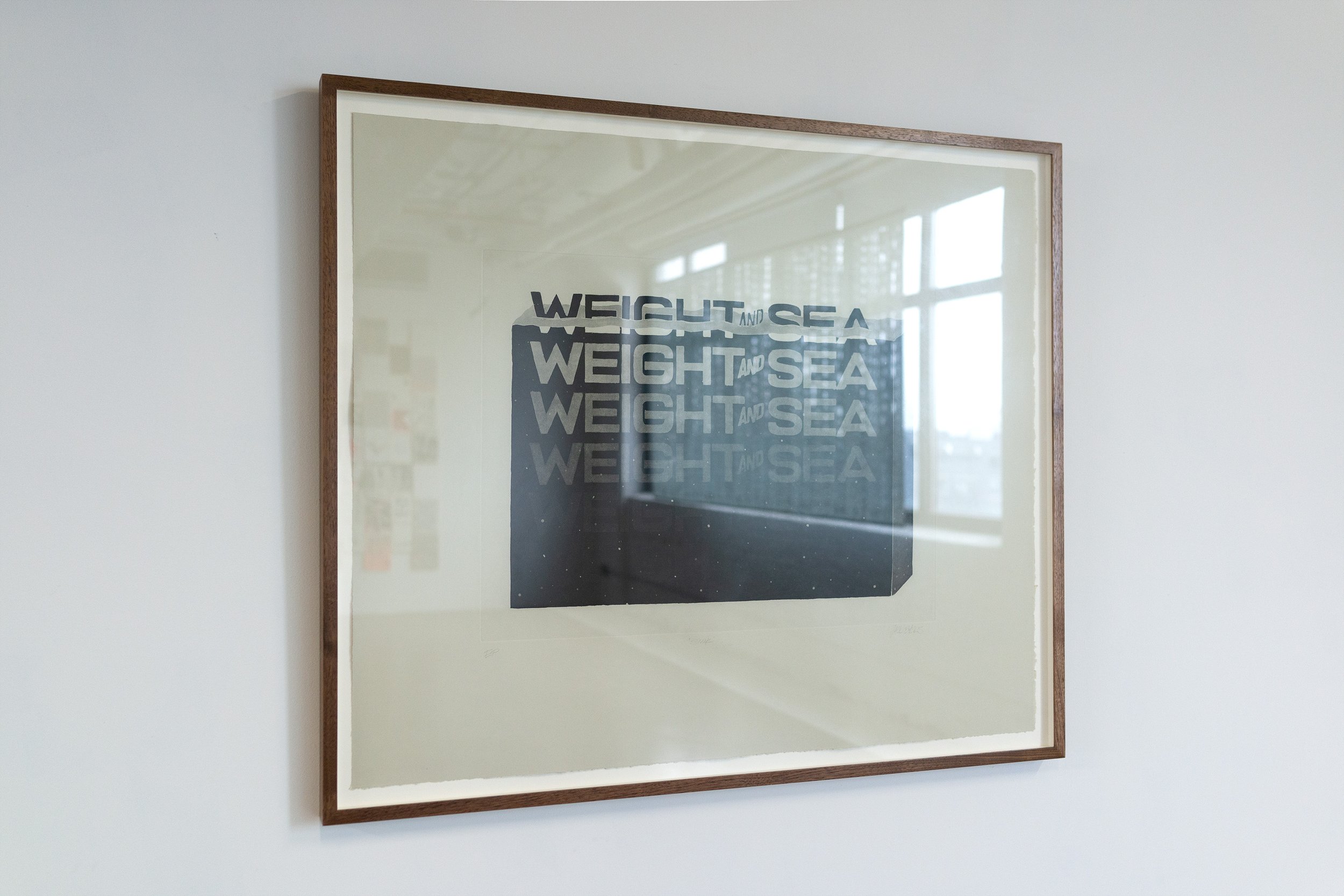
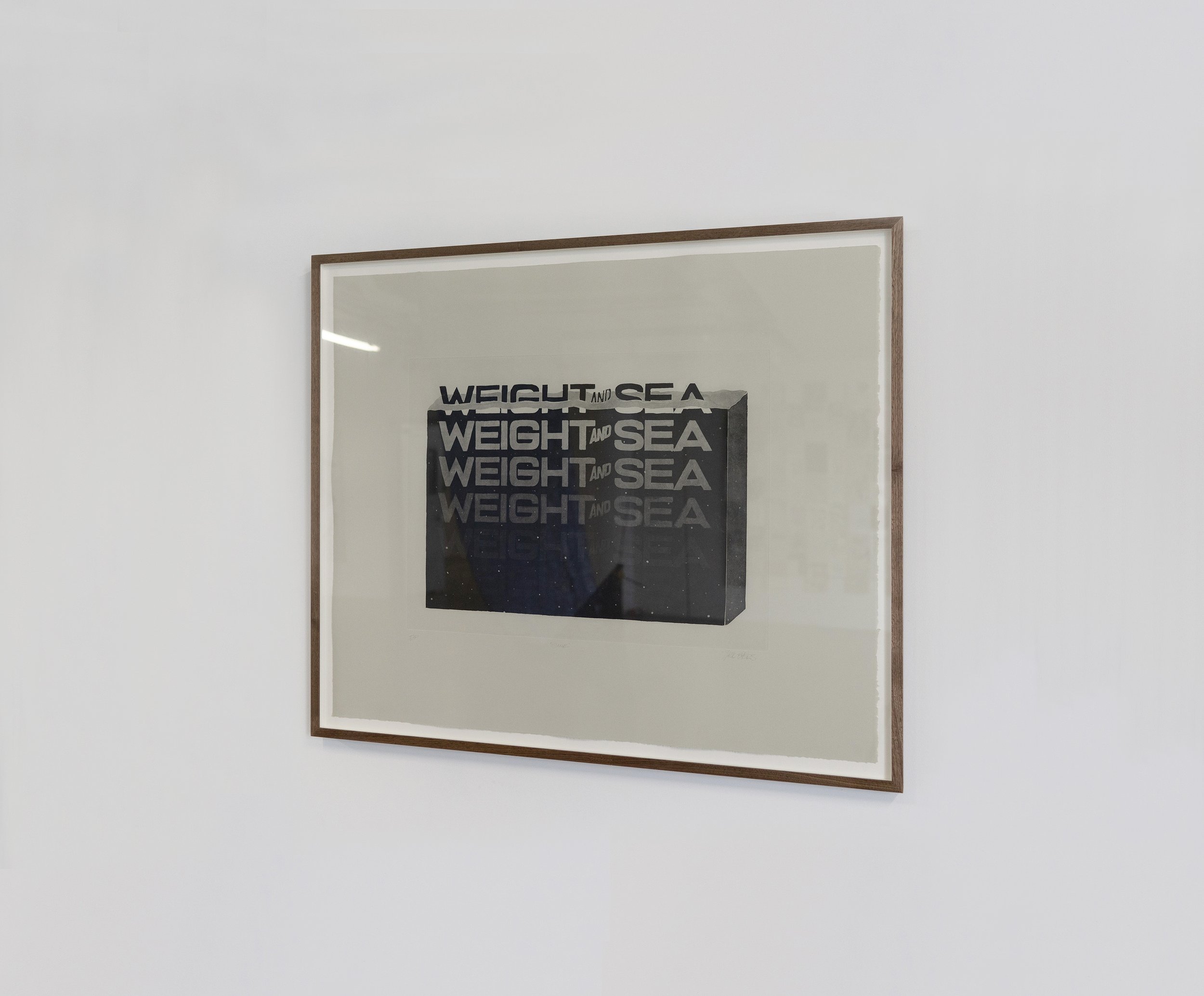
Conversation Piece (01/26/2022–03/26/2022)
2022
Acrylic media, paper, masking tape, aerosol, 91 wood panels, hardware, fruit fly
84 x 108 in.
